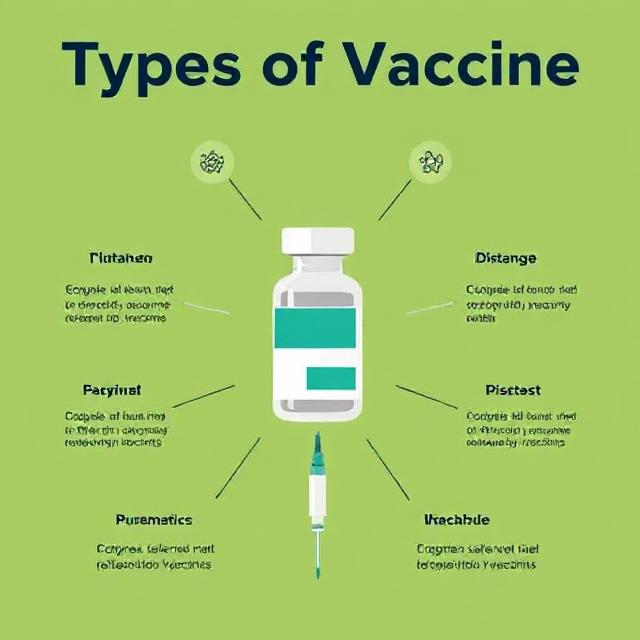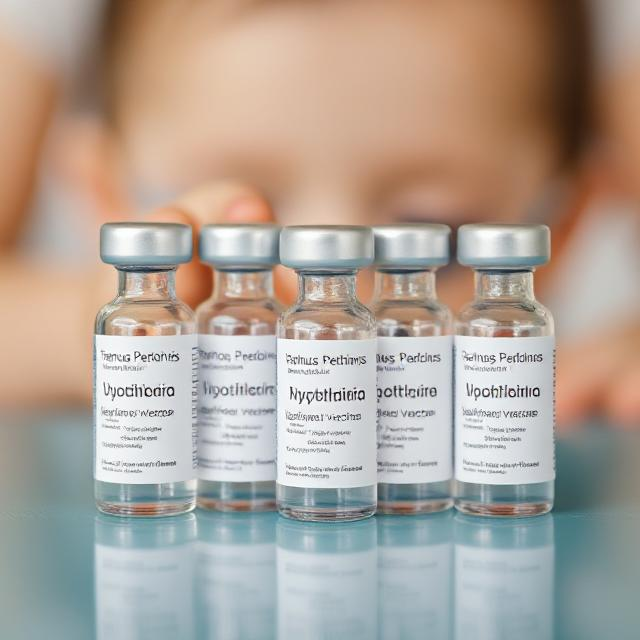Types of Vaccine
Vaccines are designed to stimulate the immune system to recognize and fight harmful pathogens, such as viruses and bacteria. There are different types of vaccines, each developed using various techniques to ensure safety and efficacy.

Types of Vaccine
Below is a detailed breakdown of the major types of vaccines:
1. Live Attenuated Vaccines
Description:
Live attenuated vaccines use a weakened (attenuated) form of the virus or bacteria. Though the pathogen is still "alive," it is modified so that it cannot cause disease in healthy individuals but still triggers a strong immune response.
Examples:
- Measles, Mumps, and Rubella (MMR) vaccine
- Chickenpox (Varicella) vaccine
- Yellow fever vaccine
- Oral polio vaccine (OPV)
- BCG vaccine (for tuberculosis)
Advantages:
✔ Provides long-lasting immunity, often after just one or two doses.
✔ Stimulates a strong immune response similar to a natural infection.
Disadvantages:
✘ Cannot be given to people with weakened immune systems (e.g., HIV patients, chemotherapy patients).
✘ Requires careful storage (cold chain) to maintain effectiveness.
2. Inactivated (Killed) Vaccines Description:
Inactivated vaccines use viruses or bacteria that have been killed or inactivated using heat, chemicals, or radiation. Since the pathogens are dead, they cannot cause disease, but they still stimulate an immune response.
Examples:
- Inactivated polio vaccine (IPV)
- Hepatitis A vaccine
- Rabies vaccine
- Japanese encephalitis vaccine
Advantages:
✔ Safe for people with weakened immune systems.
✔ More stable than live vaccines (no need for extreme cold storage).
Disadvantages:
✘ Requires multiple doses or booster shots for long-term immunity.
✘ Weaker immune response compared to live vaccines.
3. Subunit, Recombinant, Polysaccharide, and Conjugate Vaccines
Description:
These vaccines contain only specific parts of the pathogen, such as proteins or sugars, rather than the whole virus or bacteria. This reduces the risk of side effects while still generating a protective immune response.
Types & Examples:
- Subunit vaccines (contain a piece of the pathogen)
- Whooping cough (Pertussis) vaccine
- Hepatitis B vaccine
- Recombinant vaccines (use genetically engineered proteins)
- HPV (Human Papillomavirus) vaccine
- Shingles vaccine (Shingrix)
- Polysaccharide vaccines (use sugar molecules from bacterial coating)
- Pneumococcal vaccine (PPSV23)
- Conjugate vaccines (combine polysaccharides with proteins to boost response)
- Haemophilus influenzae type B (Hib) vaccine
- Meningococcal vaccine
Advantages:
✔ Highly targeted immune response, reducing side effects.
✔ Suitable for people with weakened immune systems.
Disadvantages: ✘ Requires booster doses for prolonged protection.
✘ May not provide as strong of an immune response as live vaccines.
4. Toxoid Vaccines
Description:
Toxoid vaccines contain inactivated bacterial toxins (toxins that have been neutralized) rather than the actual bacteria. These vaccines protect against diseases caused by bacterial toxins rather than bacterial infections themselves.
Examples:
- Tetanus vaccine
- Diphtheria vaccine
Advantages:
✔ Provides long-lasting immunity against bacterial toxins.
✔ Safe for all individuals, including those with weakened immune systems.
Disadvantages:
✘ Requires booster doses for continued protection.
✘ Does not protect against bacterial infection itself, only the toxins.
5. mRNA Vaccines
Description:
mRNA vaccines use genetic instructions (messenger RNA) to teach cells how to make a harmless piece of the virus’s protein. The immune system then recognizes this protein and builds immunity.
Examples:
- Pfizer-BioNTech COVID-19 vaccine
- Moderna COVID-19 vaccine
Advantages:
✔ Highly effective and can be produced rapidly.
✔ Does not contain live viruses, making it safe for most people.
Disadvantages:
✘ Requires ultra-cold storage for some vaccines.
✘ New technology, so long-term data is still being collected.
6. Viral Vector Vaccines
Description:
These vaccines use a harmless virus (not the disease-causing one) to deliver genetic material that instructs cells to produce a harmless part of the pathogen, triggering an immune response.
Examples:
- AstraZeneca COVID-19 vaccine
- Johnson & Johnson COVID-19 vaccine
- Ebola vaccine
Advantages:
✔ Strong immune response with long-lasting immunity.
✔ Easier storage compared to mRNA vaccines.
Disadvantages:
✘ Rare risk of blood clotting (specific to some COVID-19 vaccines).
✘ Some people may have pre-existing immunity to the vector virus, reducing effectiveness.
7. Combination Vaccines
Description:
Combination vaccines protect against multiple diseases in a single shot, reducing the number of injections required.
Examples:
- DTaP vaccine (Diphtheria, Tetanus, Pertussis)
- MMR vaccine (Measles, Mumps, Rubella)
- Pentavalent vaccine (Diphtheria, Tetanus, Pertussis, Hepatitis B, Hib)

Advantages:
✔ Reduces the number of shots needed.
✔ Ensures children and adults receive full protection without extra appointments.
Disadvantages:
✘ Some combinations may have a slightly higher risk of mild side effects.
A Florida vaccine medical clearance is a doctor's note confirming that a patient is medically fit to receive a vaccine or exempt due to health conditions. It serves as official documentation for schools, workplaces, or travel requirements.
Conclusion
Each type of vaccine is carefully designed based on the nature of the disease it prevents. While live attenuated vaccines provide strong immunity, they may not be suitable for everyone. Inactivated and subunit vaccines are safer but may require boosters. The newer mRNA and viral vector vaccines have revolutionized vaccine technology with their effectiveness against COVID-19.
